Biographies
They are not the disappeared, the murdered, or the victims. They are not just a number. They are Regina, Gabriel, Misael, and so many more. They are who they were before it was taken away so much from them by “the others”. And even as time passes, as words fade away, they leave behind lives, memories, and traces. They were journalists, friends, colleagues, fathers, mothers, siblings. We recovered what they did, what they wanted to do. Their essence defined them before the horror. The people who they will always be.
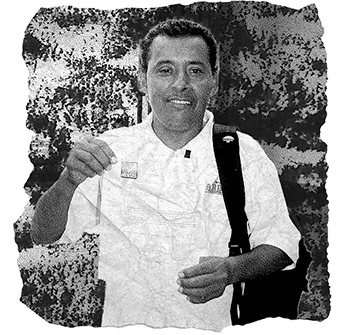
Sergio Landa
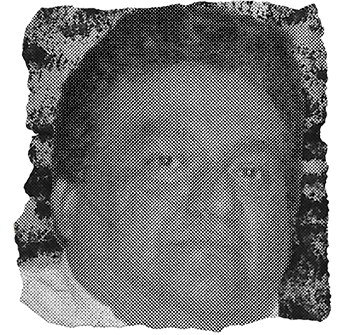
Armando Saldaña Morales
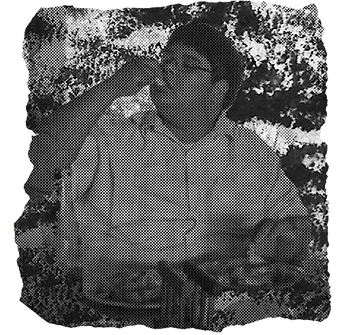
Misael López Solana
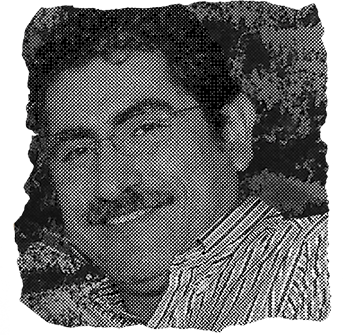
Víctor Báez Chino
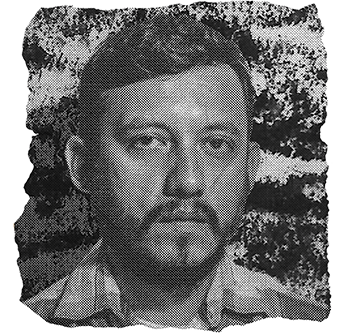
Rubén Espinosa Becerril
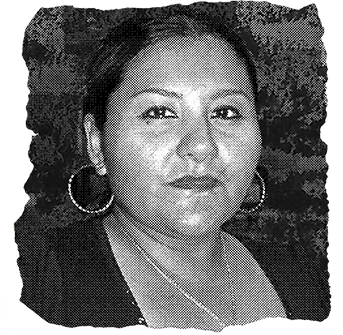
Yolanda Ordaz de la Cruz
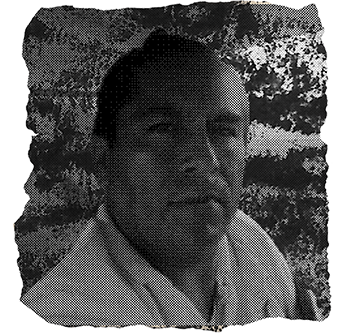
Manuel Torres González
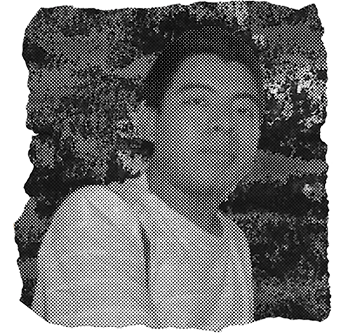
Manuel Gabriel Fonseca
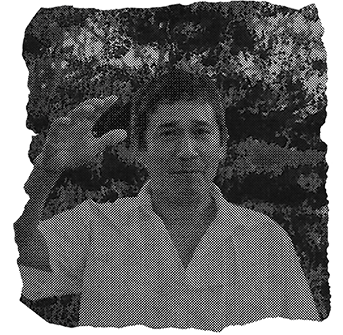
Moisés Sánchez Cerezo
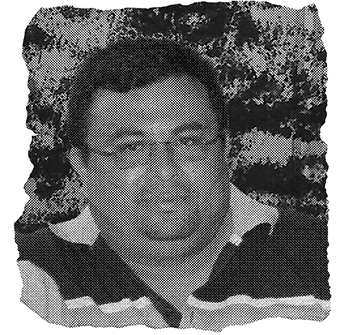
Pedro Tamayo Rosas
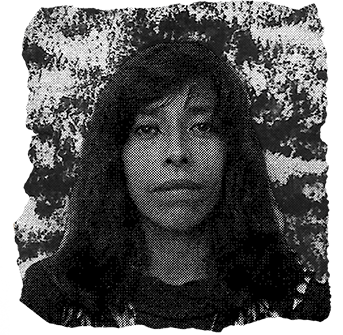
Regina Martínez Pérez
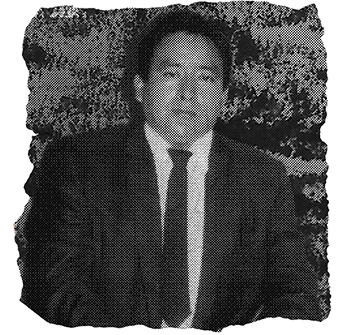
Noel López Olguín
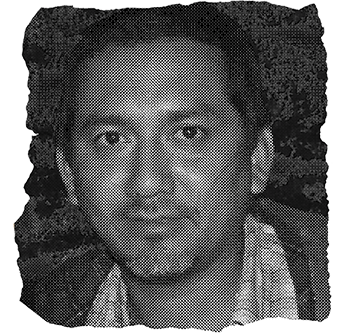
Gabriel Huge Córdova
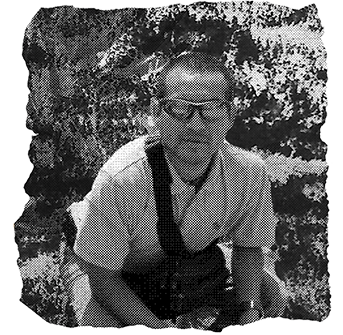
Esteban Rodríguez
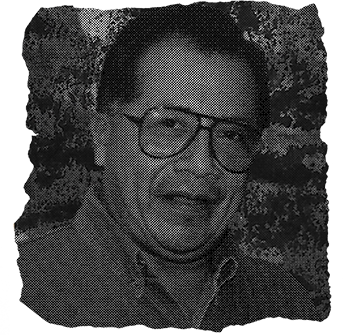
Miguel Ángel López Velasco
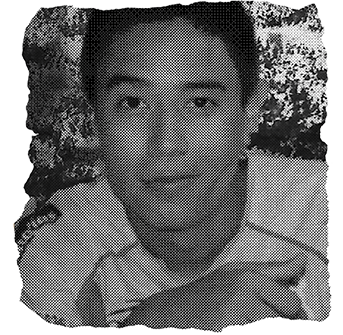
Guillermo Luna Varela
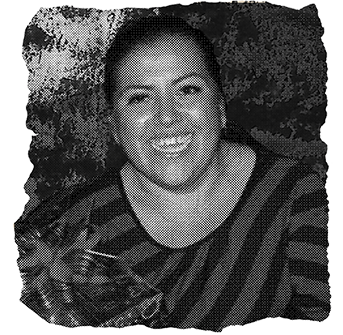
Anabel Flores Salazar
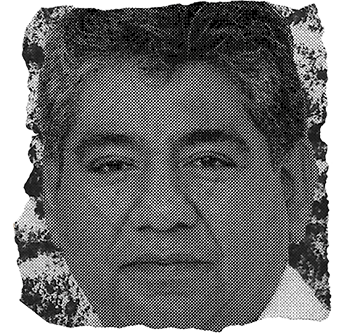
Juan Atalo Mendoza Delgado

Miguel Morales Estrada
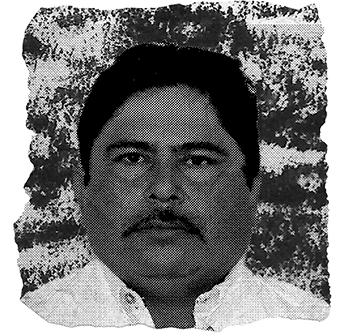
Gregorio Jiménez de la Cruz

Sergio Landa
Sergio Landa was a sign painter, painter, soccer referee, and belt weaver. Basically, a hardworking person who took whatever job came his way, his friends say.
He also worked as a public employee in the municipality of La Antigua, where he worked for five years before being laid off due to budget cuts. That’s how he ended up at Diario Cardel, his first experience in the press.
He entered journalism at a late age, at 40.
There was a vacancy for a designer, and because of his experience as a sign painter, he applied for the job. It turned out they needed more of a reporter. Sergio decided to give it a try more out of necessity than pleasure.
«I faint at the sight of a dead body,» they recalled him saying in his early days, but soon he was captivated by the passion for police stories. In the newsroom, they started calling him «the painter» because of his background in that profession, and «Speedy González» or «the rubber reporter» because when he fell off his motorcycle, he quickly got up again, according to the Nuestra Aparente Rendición website.
At Diario Cardel, he started earning 1,500 pesos twice a month without social security or a day off. At the time of his disappearance, he was earning 5,000 pesos per month plus a phone and a motorcycle loaned to him for work.
«He was a very noble person. Very honest. He had no malice whatsoever,» recalls Jesús Augusto Olivares Utrera, his colleague. They didn’t know each other until they met in the newsroom, and from there, an enduring friendship emerged. Jesús says Sergio quickly began to make contacts and sources, «he became a self-taught reporter.» It was a dark time in Veracruz, but especially in Cardel, where Sergio sometimes took risks out of inexperience and other times was exposed when the bosses edited his texts or assigned him stories he hadn’t done, those that shouldn’t be signed due to implicit censorship.
He was charismatic but also very beloved in his community. So much so that a political party – Nueva Alianza – approached him to run for congressman.
Sergio Landa was born in El Zapotito, a community that now has about 700 inhabitants in the municipality of Úrsulo Galván. His father was a farmer, his mother a housewife. He had many siblings.
He had two partners. With his first wife, Isabel Lagunes, they had three daughters. His second partner was Adela Hernández Meneses.
Sergio practiced journalism for four years and a few months. He published mainly in Diario Cardel but also in other media outlets such as ReporterosPoliciacos.com.
His friends remember him as joyful and a partygoer. A dancer, especially of salsa and cumbia. He kept himself in good physical shape because he was an athletic, often a runner, and offitiating games to earn a few extra pesos. He was passionate about soccer. He supported Chivas, Club Deportivo Guadalajara.

Armando Saldaña Morales
He was born in Laguna Chica, Veracruz.
He was 52 years old, with 25 years of journalistic experience.
He collaborated with several media outlets in the Córdoba and Tierra Blanca region: El Mundo de Córdoba, El Sol de Córdoba, La Crónica de Tierra Blanca, and Radio Max.
At the time of his murder, he had a program called on the radio affiliate La Ké Buena, a very popular station in Mexico. It was a space dedicated to political criticism and commentary from the region. It aired on Saturdays at 2 p.m., with listeners participating.
Armando was a well-known and respected person, a reference in his area. In interviews after his murder, he was named as that reliable and informed friend who could always be called upon. Several said he «had no problems with anyone,» but also in those interviews, someone who requested anonymity said, «Armando was a very straightforward journalist. He provided very strong, truthful information, and didn’t hold back. If he spoke about sugarcane farmers, for example, he said what he thought, even though that is one of the sensitive topics in this whole area of Tierra Blanca, because there are many money and power interests.»
He had to be a journalist in turbulent times, when that region began to suffer from an advance of crime that has continued to escalate. His land became a kidnapping zone for migrants and a target for fuel theft from Petróleos Mexicanos, the so-called «huachicoleo.» Some say Armando investigated the issue of fuel theft, while others claim he did not delve into those topics.
What they do agree on is his description: charismatic, calm, and chatty. He is always seen smiling in the photos that are known of him.
Together with his wife, María Isabel, they had one daughter, Marlén.
Armando was short, dark-skinned, and chubby. He liked baseball, and even narrated games.

Misael López Solana
Misa, as he is remembered, was very attached to his parents Miguel and Agustina. They shared secrets, memories, and inside jokes. He was the youngest of the three children, and his older siblings, Miguel and Yazmín, were already grown when Misael was born. That’s why he was everyone’s favorite.
He liked photography.
At the age of 20, he got a job in the social communication office of the municipality of Boca del Río, where he spent two years before moving to Notiver to work alongside his father. He went straight to the police beat, a world that fascinated him. His colleagues remember him during the shifts they spent at the base, waiting for any news to break.
«He was a kid, a big kid. A chubby guy who would arrive and make a mess. He was very cheerful,» says Makanaki, a veteran photographer of the police beat in the port, not hiding the tenderness he feels when talking about him.
He remembers Misael arriving in his red Chrysler Cruiser, where he would fit as many people as possible. He says they looked out for each other with his brother Miguel, who was also a crime scene photographed. His face changed from a smile to a deep sadness as he remembers the morning when Miguel urgently called him to his house. Upon arriving, he found the scene of the multiple homicides. Cachorro, as his father and everyone called him, invited Makanaki in to say goodbye to them at the crime scene because he knew of their mutual affection. The veteran photographer, the man who has seen death for decades, couldn’t do it: he felt it was unbearable to see Misa, his father, and his mother murdered.
Misael was 22 years old.
He was dating Ángeles. She was studying medicine, and he was in his early years as a journalist. Their relationship had begun about 8 years earlier when they were in junior high. Her father opposed it because he felt they were too young to be dating, so they started seeing each other secretly, and he would drop her off at the corner of her house. First by walking, then in his car.
Misa was tall, measuring close to six feet tall. He was a big eater, enjoying all kinds of food. That’s why he ended up being quite overweight and started a diet that was going well: he had already lost almost 30 kilos.
His sister remembers that he was smoking a lot; everyone told him he should quit that habit.
He enjoyed listening to hip-hop.

Víctor Báez Chino
He smoked unfiltered cigarettes, working with a cup of coffee or a soda can in his hands, always glued to the radio tuned to the police frequency.
Xany remembers her dad taking her to work, and she has many photos documenting those times. One shows a very young Victor reporting with his baby in his arms.
He instilled in her the love for a trade that was practically his life, to which he dedicated everything because he didn’t mind missing social or family events. Victor always put journalism first, even if it later weighed heavily on his personal relationships.
He shared some of his keys to covering police news with Xany: being self-demanding, researching, seeking an artistic angle in photos, blocking out feelings so that pain wouldn’t affect as much, and never – never – stopping to take notes.
He hardly used the recorder. He always carried notebooks. He said, «You have to pay attention and write down the important points.»
Victor started covering lifestyle, then sports, and politics. Crime news was his fourth choice, but the real hook that caught him forever and what he liked, so much, that he became a key source, a reporter who set the standard in crime reporting, says journalist Noé Zavaleta.
In 25 years of career, Victor had to navigate technological changes: when he started, they worked with film, then computers and the internet. In a quarter of a century of experience, he was editor of the Police section of the Milenio newspaper in Xalapa and a contributor to AZ Diario. Previously, he worked at El Martinense, El Diario de Xalapa, and El Sol de Córdoba. In 2008, along with a group of colleagues, he founded the website Reporterospoliciacos.com, which was a great success.
His colleagues called him «El Gavilán,» his friends «Pachi.»
He was born and raised in the state capital. He was orphaned at the age of 8 when his mother passed away.
He wrote poetry published in Estela Cultural of El Diario de Xalapa, signing with the pseudonyms Chino and Sad Andeola. He liked the work of Jaime Sabines, the Mafalda comics by cartoonist Quino, and escaping to watch movies. He drew charcoal portraits and also painted. In the arts, he rested, traveled, did everything that the busy life of a daily reporter did not allow.
He enjoyed looking at the moon, especially in October. He took photos and accumulated a large collection of moon photos.
His favorite foods were meats and seafood, especially oysters. For a while, he worked as a waiter at a restaurant in Tlapacoyan because journalism was not enough to support the family. In the morning, he delivered news on the radio, in the afternoon, he waited tables.
He tried to play the guitar but it didn’t work out for him. His ex-wife, Alma Elia, and their two children, Jonathan and Xany, remember him with love.
He had a grandson he didn’t get to meet. Like him, his name is Victor.

Rubén Espinosa Becerril
Remembered as politicized, rebellious, with a strong social conscience: that’s how they recall Rubén. He was one of those reporters who was also an activist, a mode of practicing journalism that discomforted quite a few people (including colleagues).
Rubencillo is what those who spent more time with him called him. They mention him with sadness. Some remember that he lived with very little money, but if there was someone with him, he would share a taco or whatever he had. Others say that sometimes he didn’t have money to eat, but he went out of his way to feed his dog, Cosmos. That he liked to smoke and drink coffee. That he opened his house to them, shared photos, helped denounce injustices.
Rubén Espinosa Becerril was born in Mexico City on November 29, 1983. He grew up in the Tacubaya neighborhood.
He did not study journalism or take photography courses; he was completely self-taught. In the capital, he first collaborated with the Eklipse Photo agency. Later, he moved to the port of Veracruz, where he worked for El Golfo Info. Two years later, he went to Xalapa, and thus, in total, he lived 8 years in the state of Veracruz.
Like many journalists, he had to take jobs in politics and public administration; the areas of social communication always offer opportunities. He was a photographer for Javier Duarte’s electoral campaign as a gubernatorial candidate (2009); he worked for Elizabeth Morales and in social communication when she was mayor of Xalapa (2012). But then he was able to place some images in press agencies and completely turned to photojournalism, which was his passion. He had no other choice because, being one of the most active reporters in the demands after the murder of Regina Martínez, he received threats and was eventually fired in early 2013.
He collaborated with the AVC and Cuartoscuro agencies, later also with Proceso, Mexico’s most important political magazine. There, he obtained covers and articles that criticized Duarte’s administration, but above all, he liked to cover social movements.
Although he did not live to see its public launch, he was one of the founders of the Voz Alterna collective. An effort by a group of journalists that had two objectives: to generate spaces for training and to publish stories that commercial media did not cover due to the strong control exerted by the state government.
He felt increasingly strong threats, so he moved to Mexico City. He did not choose silence: from the capital, he denounced what was happening in Veracruz, the reasons why he had to leave. He gave video interviews, never hiding his identity. He said it was difficult to start over, that it filled him with rage and pain. That he had not filed a formal complaint with authorities «because I do not trust any state institution.»
He was murdered in the capital at the age of 31.

Yolanda Ordaz de la Cruz
Always wore high heels, well-made up, and stylishly dressed: that’s how Yolanda is remembered by her colleagues. They quickly add that she had a very strong character.
Yola – as they called her – was never seen wearing sneakers: always platform shoes with tight jeans. She liked to wear Oaxacan gold copper jewery. She dyed her hair red.
They also remember her as fierce, hot-tempered, and foul-mouthed. She could shout at a colleague as well as an official, and she told many to go to hell. She had a short fuse and asserted herself. Perhaps it was her way to make her way in a male-dominated world, the police beat.
That was her only source, the path she chose to pursue from the beginning of her professional career until she reached the top where she lived: for many years, she was the lead reporter for the Crime section in the most read newspaper in the port of Veracruz, Notiver.
Yolanda was born in the state of Oaxaca. Her father was a soldier and died when she was young. Her mother, Doña Juanita, was a housewife. Yolanda and her brother grew up in a peasant home with chickens in the yard.
Later, they both moved to Veracruz, where Yolanda studied journalism at the state university. As soon as she graduated, she started working. Notiver was the place of practice, where she developed her craft, specializing entirely in crime reporting. Miguel Ángel Velasco, Milo Vela, was her professional mentor. Her teacher, boss, and also her great friend.
In Notiver, she was a creature of routine, as she was passionate about her work. Every day she did the same thing. At 10 in the morning, she would stop by the Public Prosecutor’s Office and would asked her sources what news they had. From 2 to 7, she worked in the newsroom. On her way out, from the sidewalk, she would shout to her colleague Raymundo Espejo: «Hey, come out, I’ve got your coffee.»
Crime reporting was her passion. She wasn’t impressed by seeing dead bodies or blood; what really affected her was when someone harmed a child. Once, she slapped a rapist while he was being arrested, Raymundo remembers.
– Which, well, is abuse because you’re nothing more than a spectator, but there was so much passion, anger, and rage when someone committed abuse against a defenseless child that… I think those were her greatest fears.
Fierce, but also generous with those she decided to adopt in some way, both by giving advice and paying for their expenses. There are several anecdotes of good stories she obtained but didn’t hesitate to share the credit with colleagues. This happened in the case of a Spanish citizen who was wanted in his country and was located in Veracruz for extradition.
Yolanda was 48 years old – she spend 28 in journalism – and was the mother of two girls. She was protective of them, she cared a lot about them. Today she would be happy to know that one is a teacher and the other a photographer.
She liked to have a few tequilas and eat, as a luxury, freshwater shrimp. Also, picadas [round, thick small tortillas filled with meat, vegetables or cheese] with dried beef and very spicy green sauce. Veracruz and Oaxaca.

Manuel Torres González
The first things His colleagues remember were his good humor and solidarity.
Benjamín Portilla Solís, an experienced journalist from Poza Rica, recounts how Manuel agreed to take his son Benjamín Portilla Domínguez under his wing when he decided to become a journalist just like his father. Manuel would explained how to conduct interviews, how to handle sources, and even taught him to drive his car. He even encouraged him to fill a vacancy in one of the main newspapers.
«I told him I didn’t know much about it, and he said, ‘Just say yes.’ It was the first time I entered a newspaper, and I went to the crime section of the Noreste newspaper by his invitation (…) When I arrived, they sent me to a training, then another, and another, they put a thousand obstacles so that I wouldn’t stay because I was 17 years old (…) But Manuel insisted that I stay. He had already promised me the job and held on until he got me in there to work.»
Lidia López, another reporter with a long career and also a teacher, remembers when she arrived at Noreste. She was the only woman in the police section, where Manuel was the most supportive colleague.
«I already had a daughter, and for me it was difficult because I had never worked in crime reporting. He helped me a lot, sometimes even acting as my driver, supporting me with transportation.»
She says that sometimes argued about coverage, but he always ended up taking her side, saying, «You got me.» They worked together for so many years, witnessing life pass by: both had two children, that were the same ages and schoolmates. From so much shared work time, they only have good memories, no major differences.
Manuel Torres González was the director of his own news outlet, Noticias MT. Before that, he was a correspondent for TV Azteca (2003-2011) and contributed to several local media outlets, including Noreste de Poza Rica (2003-2011), Imagen del Golfo (2003-2005), Papantla Tukulama (2005), Diario de Poza Rica (2013), and El Mundo de Poza Rica (2014).
He was a member of the Front of Communicators of Northern Veracruz and the Reynaldo de Jesús García Pérez Journalists Club. Two liaison spaces that some reporters have tried to maintain in order to take care of each other.
«Poza Rica has always been violent, the city has a history of violent directed at the media, but his murder occurred during the most opaque and violent times, during Javier Duarte’s government (…) There were times of rotation of officials (…) Crime was rampant in the district. The police worked for organized crime. We don’t know what Manuel stumbled upon,» say four colleagues gathered to discuss the case.
It is known that in the past, in the 1980s, Manuel Torres collaborated with the CISEN [The Center for Investigation and National Security], although no one has specifics. Some say he had a salary, others are not sure, and there is no certainty whether he continued with that link or had access to privileged information.
After his murder, some media outlets reported that he had been covering protests by workers of Petróleos Mexicanos (Pemex), complaints about water shortages in some areas of Poza Rica, and conflicts between criminal groups and security forces. He reported on shootings, executions, kidnappings, and confrontations in a municipality disputed by the Zetas cartel. Although this was his routine for years, since mid-2015, when he created his Noticias MT portal, Manuel stopped publishing such notes. Instead, he posted content about government activities, public security secretariat, and political campaigns in the region.
Simultaneously, as a reporter, he was a collaborator with the Poza Rica city council.
He had been kidnapped once. He worked for a congressman and earned better than some colleagues. He was generous; if he found them at night, he would buy them drinks or pay for the music.

Manuel Gabriel Fonseca
Known as Cuco among his journalist colleagues.
He was born into a poor family and started working at a young age. He began by cleaning houses, then, at the age of 12, he became a delivery boy for a magazine, and at 15, he discovered a new world.
«He hadn’t finished middle school, but Manuel Gabriel needed to work to bring money home, and he got a cleaning job at Araceli Shimabuko’s house, a journalist from his town,» and who restored Nuestra Aparente Rendición .» Araceli took him out of cleaning and put him in charge of distributing the Paisajes magazine, which she directed. Every day, they would take a taxi from their neighborhood to downtown. While she reported, he distributed subscriptions to the magazine in government offices. It was the closest he had ever been to those worlds: the interiors and behind-the-scenes of the Government Palace, a distant glance at the mayor, and some press conferences he attended with Araceli. Government officials and journalists called him Araceli’s secretary.»
Manuel Gabriel met the reporters from the area. He was fascinated when some took him to cover events that left a mark on him: he wanted to dedicate himself to that.
He got a film camera and started taking photos, which developed and scanned them at a cyber café. Later, he was able to buy a digital camera that, according to journalistic reconstruction, he proudly showed to everyone.
He got a job at El Diario de Acayucan, then at El Mañanero. It changed his life. In interviews conducted years ago, his father said he would come home late at night, around one or two in the morning, sometimes impressed because he had visited the morgue. His brother said he would bring them memelas or empanadas «and we would all get up to eat.»
Journalist Noe Zavaleta says, «According to colleagues of the Diario de Acayucan, Cuco quickly gained experience ‘and there came a time when we used him for the news that no one wants to cover: those at dawn, those that are farthest away. He was the one who ran to the police station at any hour, to the prison, to the Public Prosecutor’s Office, to the SSP delegation, to the PGR, everywhere.’ In addition, crime journalists would often ‘reward’ him with breakfast or ‘dinner tacos’ for sharing ‘data and photographs.’ The greatest satisfaction for ‘Cuco,’ they emphasized, was to feed his ego because he had information that no one else had.»
He had also gained the affection and sympathy of many people. That’s why some decided to support him so he could study: they paid for his supplies and enrollment at the Autonomous Popular University of Veracruz with headquarters in Oluta, Soconusco. He wanted to become a lawyer.
His father, Juan Fonseca, shines shoes for a living. His mother, Candelaria Hernández, and his brother Ricardo suffer from mental illness. She was very saddened by Gabriel’s disappearance, and her health deteriorated greatly: «she lost her mind waiting for her son for so long,» summarizes the father.
Manuel Gabriel, Cuco, was 19 years old when he disappeared.

Moisés Sánchez Cerezo
Shipyard loader, oil worker, mailman, newspaper vendor, fruit street vendor, scrap metal collector… Moisés worked so many jobs that his relatives find it hard to list them all. He worked since he was a child, having to do so when his father abandoned his mother and the seven siblings had to collaborate to support the family.
He met his wife, María Ordóñez Gómez, when they were very young. She was 15, he was 16. They were very close companions. They had one cherished son, Jorge.
Moisés could never study, but he had plenty of energy and enthusiasm. He was self-taught. He liked correspondence courses, took one in detective work and another in law.
As a teenager, he had his first experience as a journalist: during a labor dispute, he decided to make flyers and distribute them. The idea of founding a newspaper was born in him and he managed to consolidate it in 1990 when he began to edit and print La Unión: a medium that he kept alive with his own resources until the day he was kidnapped.
It started with handwritten flyers, then with a typewriter. He typed the notes, cut out paragraphs, pasted them, and photocopied them. His work became easier when he could buy his first computer around 2002, and his son Jorge helped him transition to the digital world. Ten years later, he bought a pawnshop mini-laptop.
La Unión de Medellín appeared irregularly: whenever Moisés had the time and money to publish it. He gathered information while out on the streets, especially during his years as a taxi driver, and wrote at night when everyone in his house went to sleep. At its peak, he distributed nearly a thousand copies of each edition and sometimes shouted out the news.
His neighbors still remember him because he was a very popular source of information in Medellín, a municipality adjacent to Veracruz and Boca del Río. A place of dirt roads without drainage or public services. An area of humble homes, many abandoned in recent years of violence. That’s where those who work in the city can afford to live.
La Unión was a completely citizen-driven medium. Moisés was a self-proclaimed journalist and activist concerned about the injustices of the world. He exposed unfinished works, questioned local authorities, and gave space to those who demanded attention.
This earned him threats, for example, when Mayor Aquiles A. Rodríguez Exome (1998-2000), from the PRD, pointed a gun at him. He also publicly criticized and confronted another mayor, the PAN member Omar Cruz Reyes (2014-2015), whom he called «the liar» in his notes.
Moisés’ disputes with local authorities were public. He generally did not publish crime news. He had a very good relationship with his colleagues from the port and had become a source for them. Through Moisés, they learned what was happening in that neglected area of the news agenda; through Moisés, news that gained national and even international prominence was amplified. Some were bothered by this.
He was born in Veracruz but had been in Medellín for over 30 years, where he and María bought land in the El Tejar community. Along with his son Jorge, his daughter-in-law, and his grandchildren, he lived in a house that they had been building for years with great effort. A place with unplastered walls, a humble home they still haven’t been able to finish.
Moisés was an evangelical Christian. One of his favorite phrases was «living in fear is not an option.»

Pedro Tamayo Rosas
Soccer was one of his greatest passions. As a young man, he was a goalkeeper who was reportedly very good, and when his children were born, he found the perfect outlet for his love: coaching youth teams. He was the coach for Posada del Sol and Pandilla Naranja. But he didn’t just train them; he also took care of getting them uniforms, sponsorship, and organizing whatever was needed.
Another thing he enjoyed was spending time with his family, friends, and loved ones. He was always organizing social gatherings, and when asked, «What are we celebrating?» he would respond, «I don’t know, the dog’s day, the tree’s day, but let’s get together.» He liked partying and music, but he didn’t dance, says Alicia Blanco, his widow.
They met while working, fell in love, and soon began to share their lives. It happened amidst the turmoil of the disappearance of a young woman who later returned, but no journalist could get the story. Pedro interviewed the girl’s mother, wrote a text, and took it to La Crónica de Tierra Blanca, the newspaper where Alicia worked and designed.
«I told him how great it was and invited him to collaborate. With just one, he caught on quickly. In an hour, he brought four stories.»
Pedro was not a journalist. He worked in a restaurant in Veracruz, later doing censuses for INEGI and in other odd jobs. In an instant, he found a new vocation and life partner; they started a journey together. They spent their time running from one place to another, covering police stories, because they both got addicted to the same adrenaline rush. They traveled in a car they bought in installments, then on a little motorcycle.
Pedro was kidnapped twice, both times in front of Alicia. The first time while documenting a van crashed into a house, the second because in a story he wrote «organized crime,» something that couldn’t be said at that time, was forbidden.
Pedro Tamayo was born on December 8, 1972, in Tierra Blanca but grew up in Mata de Caña, a town that currently has 135 inhabitants. In the seventies, it was an even smaller community by the roadside, in the countryside. He spent his childhood there, making friendships that lasted a lifetime.
In his career as a journalist, he was known and respected. He collaborated in local newspapers such as El Piñero de la Cuenca, Al calor político, Mi Revista Veracruz, and El Cañero de la Cuenca. He also founded his own news portal, En la línea de fuego. Alicia says he didn’t seek advertising agreements; he only advertised for some neighbors for free because he actually lived off his state government’s salary.
He was an employee in the Planning and Strategy area of the Secretariat of Public Security of Veracruz.
According to the magazine Contralínea, in his publications, he questioned the Attorney General of the State, Luis Ángel Bravo Contreras, and the governor, Javier Duarte. In June 2014, he covered for several days the discovery of clandestine graves in the municipality of Tres Valles, where 35 bodies were exhumed, allegedly murdered by the Los Zetas cartel.
Alicia and Pedro were a couple for 22 years, they had two children. They were spouses and also friends. When they sat down to write, they listened to Chavela Vargas, but his favorite song was «El diablo y yo» by Bienvenido Granda. It’s a catchy orchestrated danzón that ends with:
“This truth is an arony.”.
“This truth becomes an irony
That the devil brought us together, my love
And I won’t be able to erase from my memory
That it was through the devil that I knew glory.”

Regina Martínez Pérez
She loved reading literature.
Regina was born on September 7, 1963, in the municipality of Gutiérrez Zamora in the Totonacapan region, where vanilla and oranges are cultivated, a land of hard work and little money. There, they extract oil from the ground but wealth does not reach the people who lives and work the land.
She had 10 siblings, although she rarely talked to her friends in Xalapa about family life, childhood, or her origins. She was a reserved woman, also a prudent journalist: she wanted to protect her loved ones from the risks associated with her work. She didn’t exaggerate; time proved that her work bothered people in power.
When she was murdered, she was already a respected correspondent, the eyes and ears of the Proceso weekly magazine in the state of Veracruz. But to get there she had to pay her dues with dedication, and sacrifices.
Regina studied journalism at the Universidad Veracruzana. She started as a reporter at TV Más, the state television station of Veracruz. She moved to Chiapas and worked there at El Sol de Chiapas and Número Uno. By her own decision, she covered the Zapatista uprising and that indigenous world that was rebelling.
Later, in the mid-90s, she returned to her state where she joined the newspaper Política, which had a critical stance. She worked there for 20 years until she was fired, but she did not resign herself to her misfortune, but pursued a lawsuit that she eventually won. With that money, she was able to buy a house.
She collaborated with the national newspaper La Jornada, and in January 2000, she started as a correspondent for Proceso, the most important magazine in national politics.
She was also a teacher, teaching young journalists who went from being students to colleagues.
As a journalist, she always chose popular sectors, social movements, and the underprivileged as her sources. Coffee farmers, peasants, workers. She denounced and documented the abuses they suffered. Apparently, they loved and respected her so much that when there were press conferences, they sometimes waited for Regina to arrive to start speaking.
She didn’t want to cover drug trafficking; in her final years, she expressly asked Proceso not to assign her those topics. But she did report and investigate cases of corruption, abuse of power, and links between government officials and crime. She revealed, for example, serious human rights violations committed by the army. She documented some of the most controversial and important cases that were happening in Veracruz, with national and even international significance.
On more of one ocassions she received threats at her home, but she decided not to make those incidents public. She continued her investigations. Shortly before she was murdered, she asked her family to keep their distance for their own safety because she was working on something strong.
She was 48 years old.
Petite, she was 1.50 meters tall. Her colleagues remember her jokes but also her very tough character. And her decisive opinions.

Noel López Olguín
Olguín was what his friends called him, and that’s how they still remember him today in Jáltipan, a small city in the oil region of Coatzacoalcos and Minatitlán.
«Of course! Olguín, the short guy,» say the cemetery workers. The gravediggers point towards several trees near the wall, indicating that his grave is over there.
Active, lively, and talkative is how Isidro Domínguez describes him, who was not only his colleague but more so his friend. A fellow adventurer who still smiles when thinking about him.
When they met, they worked together at the La Libertad newspaper. It was an intense job: reporting during the day, printing between 10 and 12 at night, transporting the copies in the early morning, and distributing them during the morning. It was a lot of work but never burdensome because they had fun.
Isidro remembers one time when they traveled for several hours on poorly maintained roads in search of a story. They reached a point where the car could no longer advance, so they left it by a stream. They then walked for a long time. They reached their destination, managed to get their interview, but ended up exhausted and hungry because they weren’t offered any food or drink.
They looked so beat that the locals lent them a couple of horses to make the return trip easier. Noel accepted without mentioning that he didn’t know how to ride, so they went from exhaustion to laughter, Isidro recounts, because the short guy rode the horse all sprawled out, without the slightest hint of elegance.
Noel López Olguín didn’t study journalism; he was what they call in Veracruz an «empírico or a self-taught reporter,» a reporter by trade. He wrote and took photographs. He collaborated with at least four newspapers: La Verdad, Noticias de Acayucan, La Verdad de Jáltipan, and El Horizonte de Nanchital.
His colleagues say he wrote many articles that could have made people uncomfortable because he was both a journalist and an activist. He was threatenedby politicians, at least twice. He was a member of the PRD and a supporter of López Obrador, which was uncommon in the area at the time. He was born in Tehuantepec, Oaxaca, and his family moved to Jáltipan when he was a child, a small city now but very important centuries ago during the time of the Olmec culture. Noel was one of the youngest of the ten siblings.
Isidro remembers him happily bathing in the river, him arriving in his Tsuru, blasting his honk to share a beer or tequila when there was money because they earned very little. But above all, Isidro says that Noel was a friend who would answer calls at any time.
«He wouldn’t let us die alone. He loved his job, and as I say, he was a great humanitarian, really. We helped people along with the problems that some family had, some child who went to the hospital, or who needed to be taken out of jail. Well, many things like that were what we did together, really.»
He was 45 years old.
He was married twice and had four children. His two older children were 21 and 19 years old; the youngest, Lesly Cristal, was two and a half years old. His wife, Mayra González Ventura, 23, was pregnant when he was disappeared and murdered.
They lived in a humble two-room house with a dirt patio.

Gabriel Huge Córdova
When he was a child, his parents left him in the care of his grandmother, and the family embraced
him. Mercedes, his aunt, was like his mother. Isabel and Guillermo, his nephews, were like younger
siblings to him.
Gabriel worked from a young age. He sold newspapers first, and then he ventured into journalism.
He fell in love with the profession of photojournalism from the very beginning, although, being
someone who loved to work, he was not satisfied with just that: a cyber café, a video store, and a
laundry business with automatic machines appear on the long list of his ventures.
He collaborated with the newspaper El Sur and later with Notiver, entirely dedicated to the police beat. The radio in his room never turned off, says Isabel. She remembers the same sound throughout the night: the transistor tunes to police frequencies reporting accidents, murders, tragedies.
I would look out the window, he had just arrived from work, he fell asleep right there, outside, in his red Volkswagen.
No one knows him as Gabriel, everyone calls him Uge, pronouncing his last name as it sounds in Spanish, without saying it in English. In the journalistic field, they also call him Mariachi because he carried his first camera, a Pentax SLR, in a violin case.
Mario Alberto Sosa, Makanaki, is older, but he says that – like many others – he learned from Huge.
-When I met him in 2002, everybody already knew Huge. The public prosecutors knew him because he would visit their offices to ask, «Are you bringing someone in? Who are you bringing in?» – Well, we’re going to bring in so-and-so because he did this and that, they replied. He kept notes in his notebook, very good.
Several describe him as a generous colleague who shared his knowledge with the younger ones, and he even enjoyed teaching them.
He was at Notiver with Milo Vela, Misael Velasco, and Yolanda Ordaz. He was a close friend to all of them, so much so that he was the one who informed Miguel Ángel, Milo’s son, of the murder of his family.
Like many others, he had to move to save his life and survive the implicit censorship that they experienced.
True to his entrepreneurial style, he decided to found a new newspaper. It would be called El Regional de Veracruz, and his nephew Guillermo, a photographer, and Irasema Becerra, who sold advertising, would collaborate. They were working on it when the three of them, along with Esteban Rodríguez, another photojournalist, were killed.
-Huge had girlfriends everywhere -Makanaki sums up, laughing-. He covered everything from Cardel to Alvarado. Everyone knew him, both in the Public Prosecutor’s Office and in the police, the Red Cross, everyone knew Gabriel Huge. He always wore jeans, his all-terrain shoes, his polo shirts, sometimes long-sleeved dress shirts.
He was Valeria’s father.

Esteban Rodríguez
-Despite being a petite guy, about 1.50 meters tall, he was tough as nails.
One day, there was a problem. Well, in the police beat, there are always problems. Once, I took a photo of a teacher who, getting upset, came looking for me to pick a fight. Then Esteban arrived. I don’t know where he came from, but started acting tough. ‘Come on, let’s have it out. You bastard, you’re not going to touch my buddy! He was very protective of his friends, always. I can tell you that.
That anecdote sums up Esteban completely, says Mario Alberto Sosa, Makanaki, a veteran photographer from the port of Veracruz. He met him around 2002–2003, and they worked together for about ten years. The former Ignacio Allende prison was located at Allende and Canal and where they established their base. Many police beat reporters gathered there. They didn’t usually talk about their lives because, in that beat, it’s common to only look forward, but over so many years, Makanaki got to know Furcio, as they called Esteban.
He says Esteban was very family-oriented, always spending his free time with his loved ones. He preferred that, over going to bars or parties. After finishing his shift, he went straight home. Makanaki knows this because he answered the phone from there every time someone called outside of hours.
Esteban was fascinated by motorcycles and speed. Maybe that’s why he always arrived first at crime scenes. Later, he bought a car and had a serious crash, flipped over, but came out unscathed although the car was totaled.
He was always trying to get his colleagues to buy bigger motorcycles. His love for engines stemmed from childhood because his father had a mechanic’s workshop in the port of Veracruz, where he was born and raised.
He was a police beat reporter for 6 years. He collaborated for about five years with Diario AZ, also with Imagen, and for a while, he did night shifts for Notiver, as well as some reports for TV Azteca. When Milo Vela, Misael Velasco, and Yolanda Ordaz, the top brass of Notiver, were murdered, Esteban was one of those who fled to save their lives.
He returned later, but no longer wanted to work in the press. He left the profession that he felt was too dangerous. He then worked in the family mechanic’s workshop and at the Laguna Verde Nuclear Power Plant, where he trained as a welder. He was in the process of applying and testing to join the Federal Electricity Commission.

Miguel Ángel López Velasco
He left home every day at noon, returning at 2 or 3 in the morning. He would enter his children’s room, where Yazmín pretended to be asleep to enjoy the moment when her dad kissed her goodnight.
Miguel Ángel spent many hours away. A lot of time at work but with little income, with a tight salary like most journalists in Veracruz, says Yazmín, remembering that during years of devaluation, they survived thanks to her mother’s salary and benefits from her job at the Mexican Social Security Institute.
Miguel Ángel Velasco was born in Veracruz, where his parents decided to move from their native Oaxaca. They left that state because they saw no future: their grandparents were very poor. In the port city, the family managed to have a better life and even afford to send their two children, Araceli and Miguel Ángel, to school. He studied journalism but did not graduate because he fell in love with Agustina before finishing his studies, and they decided to get married.
He work as a firefighter for a while and from then on, he developed the habit of listening to the radio all day in search of accidents and news. Later, he devoted himself fully to journalism.
At the age of 19, Miguel Ángel started working at Notiver, where he eventually became an editor, later the deputy editor, and then the author of the column «Va de nuez,» which appeared on page 2, signing as Milo Vela. Miguel Angel was a public figure: the most-read columnist of the most popular newspaper in the port, Notiver.
In 1992, he published the book «Masacre en el llano de La Víbora,» which narrates the murder of federal police officers in a confrontation with the army over a drug shipment from a plane that landed in Llanos de Sotavento.
He worked in the press for almost four decades. Almost all the time at Notiver with a brief pause of about five years collaborating in other media: he was at Telever (Televisa Veracruz) and El Diario de Xalapa as head of police correspondents, while also collaborating with TV Azteca on reports. He returned to Notiver, where he worked until the day of his death.
His colleagues remember him as having a gruff and somewhat distant demeanor, friendly only with those he trusted. They call him Don Miguel, with the kind of respect that stern individuals command.
He didn’t like to travel. So much so that he sent his wife and children on vacation without him so they could enjoy themselves.
He was reserved about his personal life, although there was one exception: Notiver’s annual party. Yazmín says he always took them to that event, he was always very happy there, and he never allowed them to miss it. She keeps the only photo she has of him dancing with her dad from one of those parties.
Miguel Ángel lived with his wife Agustina for 34 years. They were very close. They talked about everything, shared everything. The good and the difficult: if one went on a diet, the other did too.
He had health problems and had neglected his body, but he managed to recover thanks to Agustina: she asked doctor friends to scare him by telling him he was at risk of death. So he stopped drinking alcohol, started to ride his bycicle everywhere, and lost weight.
They had three children, and he taught the journalistic trade to the two boys, Miguel Ángel and Misael. He enjoyed that process but was also very demanding.
He lived glued to the transistor radio at first, and then to a type of device such as a portabe radio. And he never wrote based on press releases, says Yazmín: he went to the field to see with his own eyes and even needed to «smell the dead.»

Guillermo Luna Varela
After work, he would eat whatever was available. He didn’t want his mother, Doña Mercedes, to cook for him. Guillermo was happy with tortillas and beans, he just added cheese (when there was any). What he did like was to hanging out with his mom talking; they were confidants.
Memo is remembered as a serious young man since he was a child. Isabel, his older sister, says that he didn’t play much as a child and rather had a great sense of responsibility. He started working at a young age because he felt obligated to pay household expenses. When Isabel got divorced, Guillermo was less than twenty years old but he helped pay for diapers, milk, and whatever else was needed for his nephews.
In high school, he chose technical training in air conditioning repair, but he never worked in that field. As soon as he graduated, he became a photographer. He was closely attached to his uncle Gabriel Huge, nicknamed the Mariachi, who was a principal source in police journalism in the port of Veracruz.
Mario Alberto Sosa, another experienced photojournalist from the port, looks at photos on his phone, images of Memo standing guard at an accident scene, outside the prison, in the «base» were wait for news. The photo shows a funny guy, and that’s how he’s remembered, and that’s where the contradiction immediately arises:
– There wasn’t much time for him to enjoy being a crime-reporter., he was so young.
Mario, Makanaki as they call him, continues to look at the photos he keeps. They are journalists having some drinks, having fun, eating together. Then the same people are seing in crime scenes, on a patrol car, or an ambulance. They are colleagues working, including Guillermo. Makanaki goes from smile to smile as he reviews the photos.
Memo was a wild one; he loved to have a good time. Some times didn’t pay much attention to his work, goofing around with those around him. He was about 1.75 meters tall. Despite being a bit of a mess, he was very dedicated to his work. When it was time to work, he gave it his all. I can assure that, because a few times I told him, ‘Hey Memo, are you going to the accident scene? Yes, [he responded]. – Don’t be mean; cover for me; I don’t feel like going all the way there. – Okay, I’ll give you some photos. And off he went to take some really good photos.
His mother and sister say that Guillermo was happy because he had already sold photos to several media outlets, one even paid him 1,500 pesos and with other sales, he supplemented his salary. The new editorial project with his uncle filled him with expectations of a more comfortable life.
Then he started selling texts as well, which made him even prouder. Notiver and Veracruz News were some of the media outlets where he was collaborating. Also Diario Cardel, where colleagues remember that he already spoke the jargon like an expert in police reporting, which is almost another language.
He rode an old motorcycle with just enough money for gas, but he was able to buy his first camera. When he was killed, he was still paying for it.
He was 21 years old.

Anabel Flores Salazar
She enjoyed banda music. She was also a football fan, supporting Cruz Azul. In her free time, she enjoyed watching soap operas.
Anabel studied communication at the University of the Gulf in Orizaba. She did her professional internships at the newspaper El Mundo and practiced journalism for about six years.
Her loved ones remember her passion for her work, often complaining about the hard work for little payment, but still choosing journalism every day. Several times they told her «to get out of there,» but she was driven by passion.
She started covering general and regional information at El Mundo and El Buen Tono. Later, she moved to El Sol de Orizaba as a freelance, selling stories. There, she covered the police beat for about six months.
She also published under a pseudonym in sections of crime news and on Facebook, where often there are more readers than in the press. With a fake name, as a strategy to protect her safety, she had joined and uploaded content to the group.
In one of the notes published shortly after her murder, a colleague and friend described her as daring and bold. He said she had her sources «well worked out,» that she was intrepid because she always wanted to bring the news or the photo. He also mentioned that her colleagues took care of her a lot, perhaps because of her character, perhaps because she was a woman.
Her colleagues remember her as simple, and in the photographs that have been circulated of her, she is not seen flaunting luxury. She lived in a two-story house in a social interest colony in the municipality of Mariano Escobedo, 15 minutes from Orizaba. A region of high mountains, high humidity, and temperate climate near the border with Puebla.
A place that in the past was the scene of great historical battles such as the struggle for Independence and in the present struggles to survive. Trapped between shootings, kidnappings, and vehicle thefts – even trailers – for those who travel its roads.
A loyal friend, that’s how they remember her. Devoted to her loved ones as well as to her work.
Her favorite food was coffee with Chokis cookies, butter with chocolate chips.
The day she was kidnapped and killed, Anabel was inside her house taking care of her children. The oldest was three years old then, the youngest just two weeks old.
She was 28 years old and a single mother. They took her away in her pajamas.

Juan Atalo Mendoza Delgado
He was born in Veracruz on March 10, 1969.
He worked for a year at Notiver, took photographs for the magazine Siempre, and then for 17 years was a reporter at the newspaper El Dictamen, one of the most important in the port and one of the oldest in Latin America.
At that newspaper, Juan Mendoza covered police news, but also general information and entertainment. Some colleagues who remain in the newsroom remember him fondly. The director, Bertha Ahued Malpica, says he was a good worker, a good person, who left because of his desire for independence and not for other reasons. That there were never any problems with him.
Juan Atalo had 6 siblings. He did not study journalism, he was self-taught. When he founded his own media outlet, he called it «Escribiendo la verdad» (Writing the Truth). An authentic forum in Veracruz. A portal where he made explicit his objectives: «to inform you of what happens daily, what happens while you sleep, what is experienced while the rest of the people sleep, what reporters risk to make their story and bring information to your home.»
One of his main passions was wrestling. And he even dared to step into the ring: he fought on the team of the técnicos, with a mask. Even when he became a journalist, he never abandoned that passion, says his wife Taide Griselda. She shows a mountain of photographs: they are images that he printed to keep. Half portraits with wrestlers, the other half with artists, singers, athletes.
As she looks at them, Griselda smiles, a woman of pure sweetness, attentive and detail-oriented. There is nothing out of place in her house, a two-story home that they both started to build with great effort after the birth of their son, Juan Zanoni. They named him in honor of a famous and persecuted journalist from Veracruz who was also his father’s teacher in the craft.
Juan and Griselda spent 17 years together, the first twelve in common-law marriage and then they got married. She finished the house after her husband’s murder. She works in a chain of coffee shops.
She remembers that Juan Atalo liked to listen to music, especially salsa and cumbia. That she saw him happy being a crime journalist at El Dictamen as well as in his attempt to revive his news portal.
He drove a cab in addition to his journalism ir order to make more money. He own a Nissan Tiida. And the license plate, an economic number 1962, was rented.
In his final days, he spent time in meetings and rallies. He sought to compete in the upcoming elections. He had joined the PRD and wanted to be the mayor of Medellín.

Miguel Morales Estrada
«He was always a very cheerful guy, very involved in his stories, and he was a very effective collaborator,» summarizes Luis Óscar Rodríguez, his boss at Diario de Poza Rica.
Miguel first worked in maintenance tasks at the newspaper, and when he had the opportunity, he joined the editorial team. He was a reporter and photographer from February 2012 until the moment of his disappearance on July 24 of that same year.
He would send texts as well as photographs, but it was evident that he much preferred taking pictures. Luis Óscar believes that, more than by obligation, he covered police stories out of his own desire: «He always had that love for crime reporting. It’s like he liked the adrenaline, always running around at accidents, homicides, and the daily events.»
Although he had a secure salary at the newspaper, like many other journalists, he had to supplement his income with multiple jobs. That’s why he also sold stories to other media outlets such as Tribuna Papanteca and www.gobernantes.com.
He was a self-taught journalist, not having the opportunity to study. A resident of Colonia Morelos, where he lived with his wife and their daughters. Of humble condition like many journalists who live day to day.
When he disappeared, Miguel Morales was busy preparing for his daughter’s 15th birthday party. He had already hired the musical group and was getting quotes for banquets. He is remembered as excited, so much so that he asked a colleague to teach him dance steps because it wasn’t his strong suit, and he was worried about not doing well when dancing the waltz.

Gregorio Jiménez de la Cruz
Nights were his favorite time: the whole family gathered in front of the television, eating popcorn and watching a movie on DVD. If the movie wasn’t over by ten, the TV would be turned off to finish watching it the next night. The movie titles sparked lively debates because Gregorio liked comedies, Carmela enjoyed horror films, and their children took sides according to their preferences.
It was Gregorio’s favorite ritual. He enjoyed spending time with his 7 children. Everyone shouting, everyone laughing, together. Gregorio Jiménez de la Cruz also enjoyed painting in oil, singing, and composing songs for his evangelical church (he would wrote them down in a little notebook). Another pleasure was catching crabs in the sea to share them at the family table. He did it when there was free time, which was actually scarce.
With Goyo, it was always work, he never stayed still,» recalls Carmela, his widow. Short, dark-skinned, energetic. She’s an equally unstoppable woman who has two or three jobs simultaneously, with barely a couple of hours of free time between running from one place to another.
Gregorio was born in Minatitlán. He worked there since he was a child because his father abandoned his mother, and the sons, all boys, had to go out to earn money to support the household expenses. Goyo sold tortillas, accompanied his mother selling food and dishes. Later, he studied to be an electrician, with which he began repairing irons, blenders, and washing machines.
For a long time, he dedicated himself to electricity until he got into journalism when his brother Avelino started as a reporter. He liked that job, besides being fun, it meant a better salary.
That’s how Gregorio approached Notisur looking for a job. He had no experience, but he was excited about the world of news, remembers Zayda Chiñas, his editor-in-chief. They gave him a journalism manual, and she corrected each text herself.
He signed under the pseudonym «El Pantera» (The Panther). He covered the police beat for the newspapers Notisur, Liberal del Sur, and La Red, although when he died, none of those media outlets wanted to pay for his coffin.
Journalism was better than being an electrician, but without a university degree, having learned to read and write on his own, it wasn’t so comfortable to transition from one to the other. He barely earned 20 pesos per story (which was about a dollar and a half at the time).
So he and Carmela decided to start photographing social events. They took portraits at weddings and first communions. They bought a Santa Claus suit for December photos and a donkey for the day of the Virgin of Guadalupe.
Carmela, Gregorio, and their children moved several times for work reasons. They lived for many years in the municipality of Villa Allende, on the outskirts of Coatzacoalcos, reached by crossing a long tunnel under the water. But also they lived sometime in Villahermosa, Tabasco state, and in Cancun, Quintana Roo.
They had a white Chevy and a motorcycle that Goyo bought on installment. They decided to build their house on the outskirts of Villa Allende. A home that at the time of the murder had a dirt floor and was still without doors.
«He poured the concrete, made the cement, laid the blocks.»